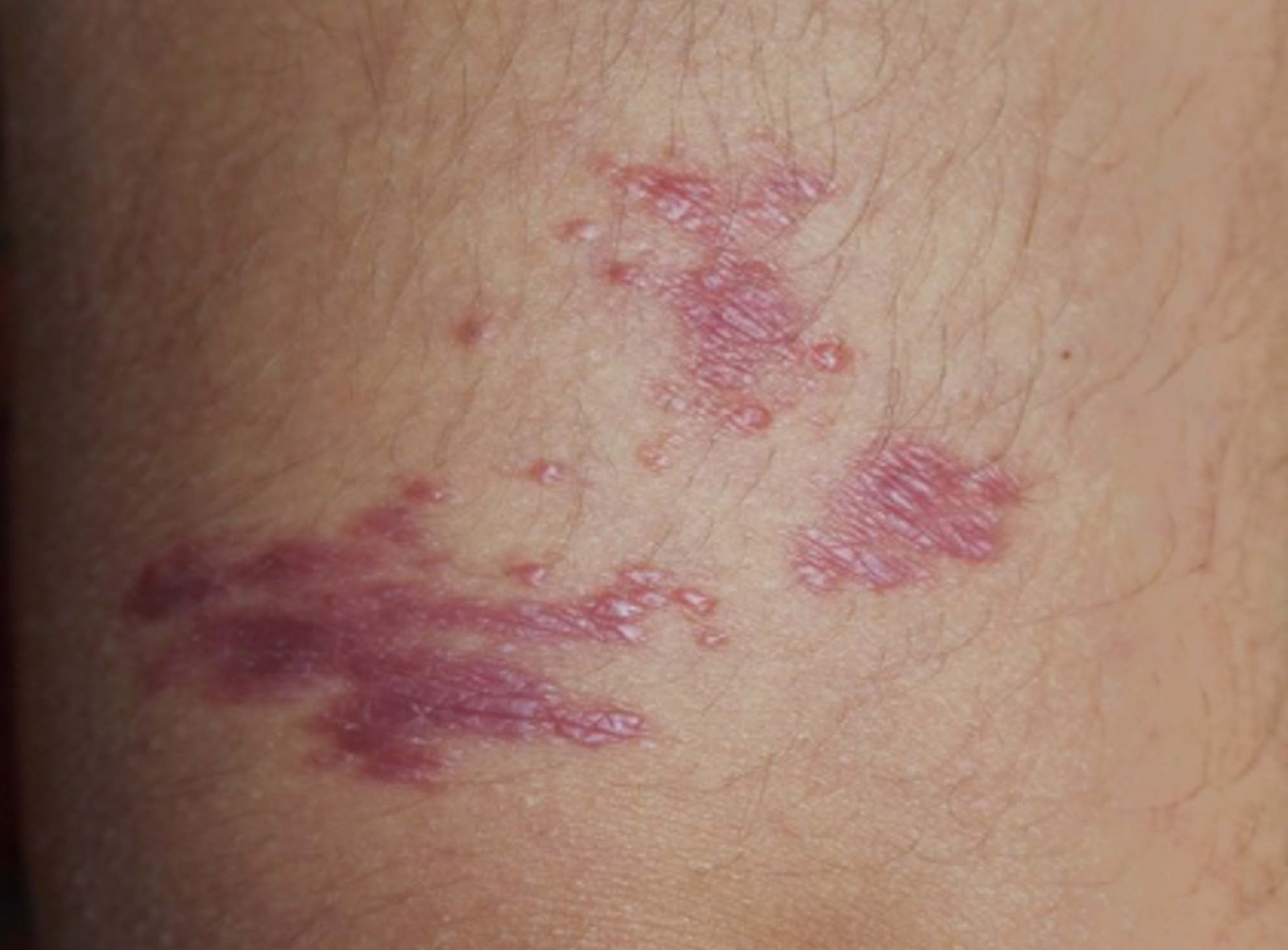Acral pseudolymphomatous angiokeratoma of children respond to a combination of local UVA phototherapy and intralesional corticosteroids
Keywords:
Acral pseudolymphomatous angiokeratoma of children, APACHE, UVA, phototherapyAbstract
Acral pseudolymphomatous angiokeratoma of children or APACHE is a rare, benign cutaneous disease with unknown etiology, characterized by multiple, asymptomatic erythematous to violaceous papules and nodules, usually located unilaterally on the acral distribution, mostly affecting children. We reported a 12 year-old girl presented with 4 years history of multiple confluent non-blanchable erythematous papules and plaques on posterior aspect of right arm previously diagnosed as chronic eczema, followed by solitary mycosis fungoides after skin biopsy. The lesion did not respond to the one course of local NB-UVB. Repeat skin biopsy, immunohistochemistry, and also T-cell receptor gene rearrangement study were sent and the results were compatible with APACHE. Local UVA phototherapy combined with intralesional corticosteroid injection were treated with a good outcome after therapy.
References
Lessa PP, Jorge JC, Ferreira FR, Lira ML, Mandelbaum SH. Acral pseudolymphomatous angiokeratoma: case report and literature review. An Bras Dermatol 2013; 88: 39-43.
Fernandez-Flores A, Fierro S, Larralde M. Expression of WT-1 by the vascular component of acral pseudolymphomatous angiokeratoma of children. J Cutan Pathol 2015; 42: 50-5.
Kim Y, Dawes-Higgs E, Mann S, Cook DK. Acral pseudolymphomatous angiokeratoma of children (APACHE). Australas J Dermatol 2005; 46: 177-80.
Hagari Y, Hagari S, Kambe N, Kawaguchi T, Nakamoto S, Mihara M. Acral pseudolymphomatous angiokeratoma of children: immunohistochemical and clonal analyses of the infiltrating cells. J Cutan Pathol 2002; 29: 313-8.
Evans MS, Burkhart CN, Bowers EV, Culpepper KS, Googe PB, Magro CM. Solitary plaque on the leg of a child: A report of two cases and a brief review of acral pseudolymphomatous angiokeratoma of children and unilesional mycosis fungoides. Pediatr Dermatol 2018. doi: 10.1111/13686.
Tokuda Y, Arakura F, Murata H, Koga H, Kawachi S, Nakazawa K. Acral pseudolymphomatous angiokeratoma of children: a case report with immunohistochemical study of antipodoplanin antigen. Am J Dermatopathol 2012; 34: 128-32.
Lee MW, Lee DK, Choi JH, Moon KC, Koh JK. Clinicopathologic study of cutaneous pseudolymphomas. J Dermatol 2005; 32: 594-601.
Ally MS, Pawade J, Tanaka M, et al. Solitary mycosis fungoides: a distinct clinicopathologic entity with a good prognosis: a series of 15 cases and literature review. J Am Acad Dermatol 2012; 67: 736-44.
El Mofty M, Ramadan S, Fawzy MM, Hegazy RA, Sayed S. Broad band UVA: a possible reliable alternative to PUVA in the treatment of early-stage mycosis fungoides. Photodermatol Photoimmunol Photomed 2012; 28: 274-7.

Downloads
Published
How to Cite
Issue
Section
License
เนื้อหาและข้อมูลในบทความที่ลงตีพิมพ์ในวารสารโรคผิวหนัง ถือเป็นข้อคิดเห็นและความรับผิดชอบของผู้เขียนบทความโดยตรงซึ่งกองบรรณาธิการวารสาร ไม่จำเป็นต้องเห็นด้วย หรือร่วมรับผิดชอบใดๆ
บทความ ข้อมูล เนื้อหา รูปภาพ ฯลฯ ที่ได้รับการตีพิมพ์ในวารสารโรคผิวหนัง ถือเป็นลิขสิทธิ์ของวารสารฯ หากบุคคลหรือหน่วยงานใดต้องการนำทั้งหมดหรือส่วนหนึ่งส่วนใดไปเผยแพร่ต่อหรือเพื่อกระทำการใดๆ จะต้องได้รับอนุญาตเป็นลายลักอักษรจากบรรณาธิการวารสารโรคผิวหนังก่อนเท่านั้น


